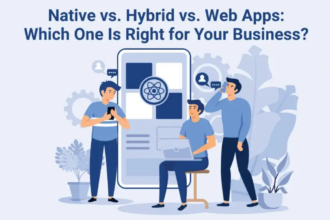People are turning to using solar power, a preference that’s much more practical and sustainable in the current trend. The reason? Cost Saving. Sunlight is free once you install solar panels, and over time, it reduces your electricity bills. But this solar power works efficiently with one tool — The Solar Cable.
They connect components, help transmit electricity generated by solar panels, and offer maximum safety and efficiency — May look like a small part, but they are the experts behind the process of delivering clean, reliable solar power to your everyday devices.
Curious to learn more about them? Let’s go deeper.
Brief Overview of Solar Cables
Solar cables (also known as photovoltaic or PV cables) are not like the regular cables we come across. They are specially made to be used in photovoltaic (solar) systems. They transmit power from solar panels to inverters, batteries, and other equipment like charge controllers.
They withstand outdoor conditions, extreme temperatures, and protect against moisture, UV rays, and any mechanical stress, and prevent oxidation and corrosion – And this is why solar cables stand high!
2 Main Types of Solar Cables
DC (Direct Current)
Thick insulation in these cables helps resist high voltages and extreme conditions. They are better at directing the flow of current between the solar panels and the inverter. Their durable features make them do this task effectively.
AC (Alternating Current)
These cables are insulated with materials that work indoors as well as in outdoor conditions. They transmit the converted alternating current electricity and connect inverters to electrical distribution panels or grid points to distribute solar-generated electricity to either homes or businesses.
Process of How Solar Cables Work
Solar energy systems work by,
- Power of Sunlight → Solar Panels → DC → Solar Cables → Inverter → AC → Devices
Sunlight that hits the solar panels is absorbed by solar cells inside the panel. This then releases electrons, creating DC electricity. It’s the solar cable that passes DC electricity to inverters and converts it into AC electricity. And then finally, you can power and work with various appliances.
Solar Cables are the Best Choice. Here’s Why!
PV cables – their resistance, flexibility, durability, high voltage handling, and efficiency make them a preferable cable for solar power transmission. But how are they actually doing it?
Here’s a detailed explanation.
Fire Resistance
PV cables are mostly used outdoors, exposed to extreme environmental conditions. The length of the cables stretches over the distance, with high-voltage transmission causing fire hazards. Cables with flame-retardant materials automatically suppress and slow down the spread of flames, preventing it in the early stage.
UV Resistance
Due to exposure to harsh environmental conditions for a long time, extreme UV radiation from the sun can weaken the materials and may cause the cable to crack or become brittle. To prevent this, solar cables are made with UV-resistant materials. For example, XLPE (Cross-Linked Polyethylene) is used in solar cables. The cross-linking process makes the polymer structure strong enough to offer excellent resistance to UV.
Flexibility
Solar cables are flexible! It’s with the help of TPE (Thermoplastic Elastomer) insulation that allows the PV cable to bend around tight corners. So installation in various environments is way easier.
Durability
These solar cables are made with rugged and high-quality materials. Therefore, strong and long-lasting attributes are expected to be fulfilled. For example, cables made of copper are durable and best suited for any solar system.
Low Voltage Drop
When the cable has high resistance, some of the electricity flow might get lost as heat. But if it has low resistance, the electricity reaches the inverter, helping with more efficiency. PVC-insulated cables are sometimes used for low-voltage or indoor systems.
Choosing The Best Quality Solar Cables
To get the maximum use of solar cables, it is important to select the highest quality cables.
- Quality: Look for top and premium cables to handle weather and allow long-term performance.
- Voltage: Before purchasing, you can go with ratings for the voltage and amperage of your cables and decide.
- Length: It’s best to choose the right cable length for smooth transmission. Because with longer cables, the voltage drops and the resistance increases.
- Size of Conductor: The proper size should be selected to transmit power safely and effectively.
Conclusion
Solar cables are an important part of solar energy systems. They allow efficient transmission of electricity produced by solar panels. With the right materials and performance, they work best for your needs. Zable Cable offers reliable solar cables made with XLPE or PVC insulation and TPE or PVC sheathing to suit various applications. Explore and learn about the solar cable types, uses, and buying considerations to choose the right one.















